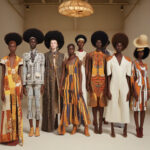Nordstrom is making significant strides in capturing the attention of Generation Alpha through its innovative approach to beauty products. The retailer’s recent initiative reflects a broader trend in retail where brands aim to engage with younger consumers, focusing on their distinct preferences and shopping behaviors.
In August 2024, Nordstrom introduced a series of lavender kiosks on their teen apparel floors, showcasing popular beauty brands that resonate with this demographic, such as Kiramoon and Kaja. These kiosks not only provide a physical space for discovery but also serve as a vibrant intersection between fashion and beauty. With locations in cities like Seattle, Chicago, and San Jose, the initiative is expanding swiftly, with an impressive array of over 850,000 products available online.
This approach is not just about products; it taps into the aspirations and needs of young shoppers today. According to Debra Redmond, Nordstrom’s VP of beauty merchandise, young consumers are often well-informed and research-driven before they even step foot in a store. With social media platforms, especially TikTok, heavily influencing their choices, these consumers actively seek products that align with their values and aesthetics. This emphasis on self-care and products tailored for them marks a paradigm shift in the beauty retail landscape.
Significantly, the beauty sector is experiencing an explosive growth especially among teenagers and tweens. Investment firm Piper Sandler reported that high school students are spending 23 percent more on beauty products compared to the previous year, highlighting the increasing economic power of this age group. Categories like lip gloss and body mist have seen record spikes in revenue, reminiscent of the ‘90s trend of mall shopping among teens. Nordstrom’s initiative to create a “Young Adult Beauty” category speaks volumes about its commitment to embracing this burgeoning market.
Moreover, Nordstrom has recognized that beauty preferences among younger audiences are evolving beyond traditional notions of makeup. Understanding that Gen Alpha consumers are looking for authenticity and products that resonate with their lifestyle, Nordstrom is shifting its focus toward brands that offer innovative solutions. For example, the retailer is keen on expanding its range to include trending self-care products such as shaving creams and vegan skincare, responding to popular themes on social media platforms that resonate with this demographic.
While Nordstrom strategically aligns itself with popular beauty trends, the challenge remains on how to maintain relevance in a fast-paced market. The beauty realm is rife with brand collaborations and limited edition releases aimed at captivating younger shoppers. Products must not only be visually appealing but also carry meaning and relevance to their lives. Brands that can effectively communicate their values and engage consumers in an authentic manner are more likely to thrive.
The retail giant is also learning from successful parallels in the fashion industry. For instance, Zara’s children’s division has successfully blended contemporary fashion sensibilities with age-appropriate designs, attracting young shoppers who prefer styles that feel cool rather than childish. Similarly, Nordstrom aims to curate its beauty offerings by featuring brands that present youthful aesthetics without veering into childlike territory.
The rise of digital shopping means that Nordstrom also has an opportunity to leverage its online presence. The “Young Adult Beauty” category isn’t solely limited to in-store shopping; consumers can explore products virtually, allowing for a greater sense of accessibility and variety. This dual approach enhances the shopping experience, meeting consumers where they are most comfortable.
To preserve its edge in this competitive landscape, Nordstrom must continue to engage with its young customer base through social media and digital platforms. This includes optimizing their online offerings based on consumer insights, staying ahead of trends, and fostering a community around the “Young Adult Beauty” experience. Understanding the nuances of this demographic’s preferences can create long-term brand loyalty and influence their future purchasing decisions.
In conclusion, Nordstrom’s venture into the “Young Adult Beauty” segment represents a proactive step in adapting to the changing landscape of consumer preferences. By integrating insights from youth culture and industry trends, the retailer is positioned to not only capture economic potential but also foster a genuine connection with a new generation of beauty enthusiasts. As the beauty industry evolves, Nordstrom’s example reminds us of the importance of innovation and adaptation in a retail environment that is increasingly driven by the desires of younger consumers.











